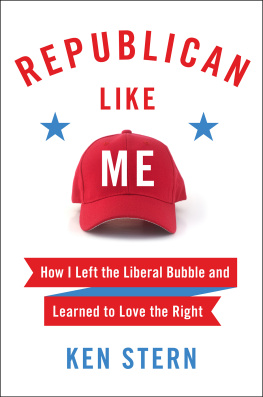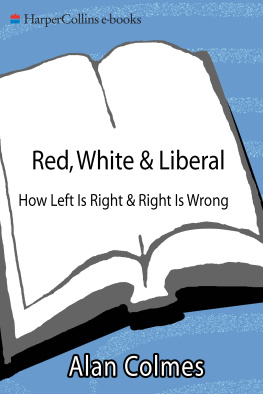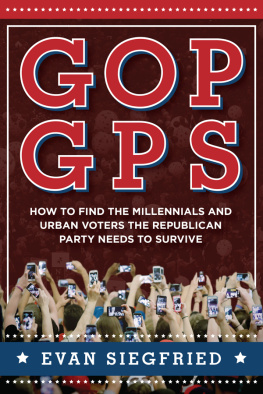Contents
For Hobart Street
You never really understand a person until you consider things from his point of view.
Atticus Finch, in To Kill a Mockingbird
Hobart Street is just a single block, but it is long enough to have three rough geographic areas: Hi-Ho, for the area at the top of the hill near Mount Pleasant Street; Lo-Ho, at the bottom of the hill bordering Irving Street; and Mid-Ho, in between. I live in Mid-Ho.
Today, the Mount Pleasant neighborhood is tranquil and stately, populated by so many young families that it is occasionally referred to as Mount Stroller. But the area has had its ups and downs over the years. It was first developed about one hundred years ago and, even though the neighborhood sits only three miles north of the White House, Mount Pleasant was originally conceived and marketed as a suburb, its modest elevation offering an allegedly cool respite from the heat of the D.C. swamp. If you walk around Mount Pleasant and adjoining areas today, with its gracious row homes and stately embassies, you would be forgiven for thinking of its history as one unbroken line of financial prosperity. But that is not the case. Like many parts of the city, and like many cities in this country, Mount Pleasant experienced considerable white flight during the 1960s and 1970s, those whites replaced largely by lower-income blacks and Central American immigrants. The neighborhood struggled for decades, with the nadir being the Mount Pleasant riots of 1991, which consisted of three days of protesting, looting, and burning of police cars. Mount Pleasant has undergone an accelerating re-gentrification over the last twenty years, which has resulted in a cultural and economic mix that is a significant part of the neighborhoods charm: trendy Thai restaurants abutting bodegas, big-box stores looming over Salvadoran fast-food places. There is a little something for everyone, which is why Mount Pleasant is often described as diverse and eclectic, and we like it that way.
Our commitment to diversity is pretty complete when it comes to black, white, and brown, and to the rainbow colors of the gay pride flag, but it falls a little short when it comes to red and blue. The neighborhood is astonishingly Democratic and liberal. Hillary Clinton received 92.5 percent of the vote in the 2016 general election and Jill Stein outpolled Donald Trump in my precinct by a narrow margin (74 votes to 70). During 2016, it was always very easy to spot a Bernie Sanders or a Black Lives Matter yard sign, but good luck finding one for Bush or Kasich, let alone Trump or Cruz.
In the past, I never paid much attention to the political homogeneity of Hobart Street, other than a joke here or there with my neighbors. Hobart Street and the Mount Pleasant neighborhood arent all that different from the wider city and, lets face it, I fit in rather well, being a lifelong Democrat married to a Democratic staffer on Capitol Hill. It all seemed pretty natural, until Porchfest.
Say what you want about Hobart Street, but it has a lot of team spirit. Every Halloween the street is closed to traffic and kids from miles around come here, certainly attracted by the efficient access to candy provided by row homes and perhaps by the dead baby house, a neighbor who strings baby dolls in various bloody poses and drops them down on the trick-or-treaters as they approach the front porch (I said we have team spirit, not good taste). Porchfest is the other main festival of the Hobart social calendar, our annual block party held each June. Virtually every house on the block contributes something: a food stand, music, home-brewed beer, a slip-and-slide for the kids. My wife, Beth, stays up all night baking cookies, which she cuts variously into the shape of the Washington Monument, the Capitol Building, and a map of the District of Columbia. Some she decorates herself, but others are left unfrosted so that the kids can wield the icing tubes like junior Jackson Pollocks. They do that with uncommon enthusiasm, if not complete coordination. For days afterward, our front steps look like the victim of a food-coloring balloon prank.
The highlight of Porchfest is the annual parade, which is always led by a marching band, a fire truck from the local firehouse, the same vintage convertible that appears each Porchfest and then is not seen again on Hobart Street for the rest of the year, and all the kids on the block, some riding bikes or scooters, others tunelessly playing musical instruments, or in the case of my nine-year-old son, Nate, randomly throwing a baseball up in the air. Its all hopelessly chaotic, like a band in which all the musicians are playing from different sheet music, and its all wonderful. And every year the parade starts with the children reciting the Hobart Street Pledge. I always loved the Pledge, at least the concept of it, that in our increasingly entropic world we share a community, an identity, a home here on Hobart Street. I loved the Pledge, that is, until I bothered to listen to the words, which I discovered one year go something like this: I pledge allegiance to Hobart Street Northwest.... Gay or straight, woman or man, all are welcome on Hobart Streetexcept for Republicans.
The end of the Pledge was meant to be all good fun, I suppose, except for the fact that it reflects an uncomfortable truth: as much as my neighbors on Hobart Street speak to the values of diversity and tolerance, they have no real interest in viewpoint diversity. I have tried, episodically and unsystematically, to find a Republican on Hobart Street. They must be there: our precinct is 94 percent Democratic, an astonishing number on its face, but that must mean there is still that 6 percent somewhere. Its simple to find Democrats: Bernie banners? Yes. Hillary bumper stickers? Sure. Black Lives Matter yard signs? Plenty of them. An Everybody SUCKS, Were Screwed 2016 sign that pops up right after the election? You bet. But evidence of support for Bush, Kasich, Cruz, Carson, or Trump? No, no, no, no, and hell no. I posted a plea on our local message board, Nextdoor Mt. Pleasant, for information on any Republicans on Hobart Street, and was met with a stony silence. At one point I thought I would hit pay dirt with my neighbor Richard, mostly because I knew him to be entirely dismissive of liberal orthodoxy, but it turns out that Richard is just dismissive by nature. When I finally cornered him, he confessed that he hasnt voted for a Republican for president since 1992. I heard tale of a Republican who used to live on Hobart Street, but thats as close as I ever came.
Truth be told, in its political homogeneity, Hobart Street is not all that unusual. During the 2016 election, the Washington Post asked Virginia voters whether they had any family members or close friends who were supporting the opposing candidate. Fifty-four percent of Trump supporters and 60 percent of Clinton supporters reported that they had no family members and no close friends who were planning to vote for the other side. It is an extraordinary thing, if you think about it for a moment. Virginia was a closely contested state, swinging back and forth on election night, ultimately going to Hillary Clinton by just five points. But somehow a majority of Virginians had managed to arrange their friends and family to be entirely politically compatible. Amazing as it is, I must confess that it was the same for me as well, but at least I have the excuse of living in a single-party neighborhood.
The truth is that my neighbors dont really want Republicans among them, because they fear and dislike them. Over the past two years, from time to time, I have conducted an informal and resolutely unscientific poll of neighbors and guests on our street, asking them: Would you say the Republican Partys policies are so misguided that they threaten the nations well-being, or would you not go that far? Almost uniformly, and almost always without hesitation, they have answered yes; when I have pushed harder and urged reflection, they have affirmed their strongly held belief that Republicans as a group do form a real threat to the health of the United States.






